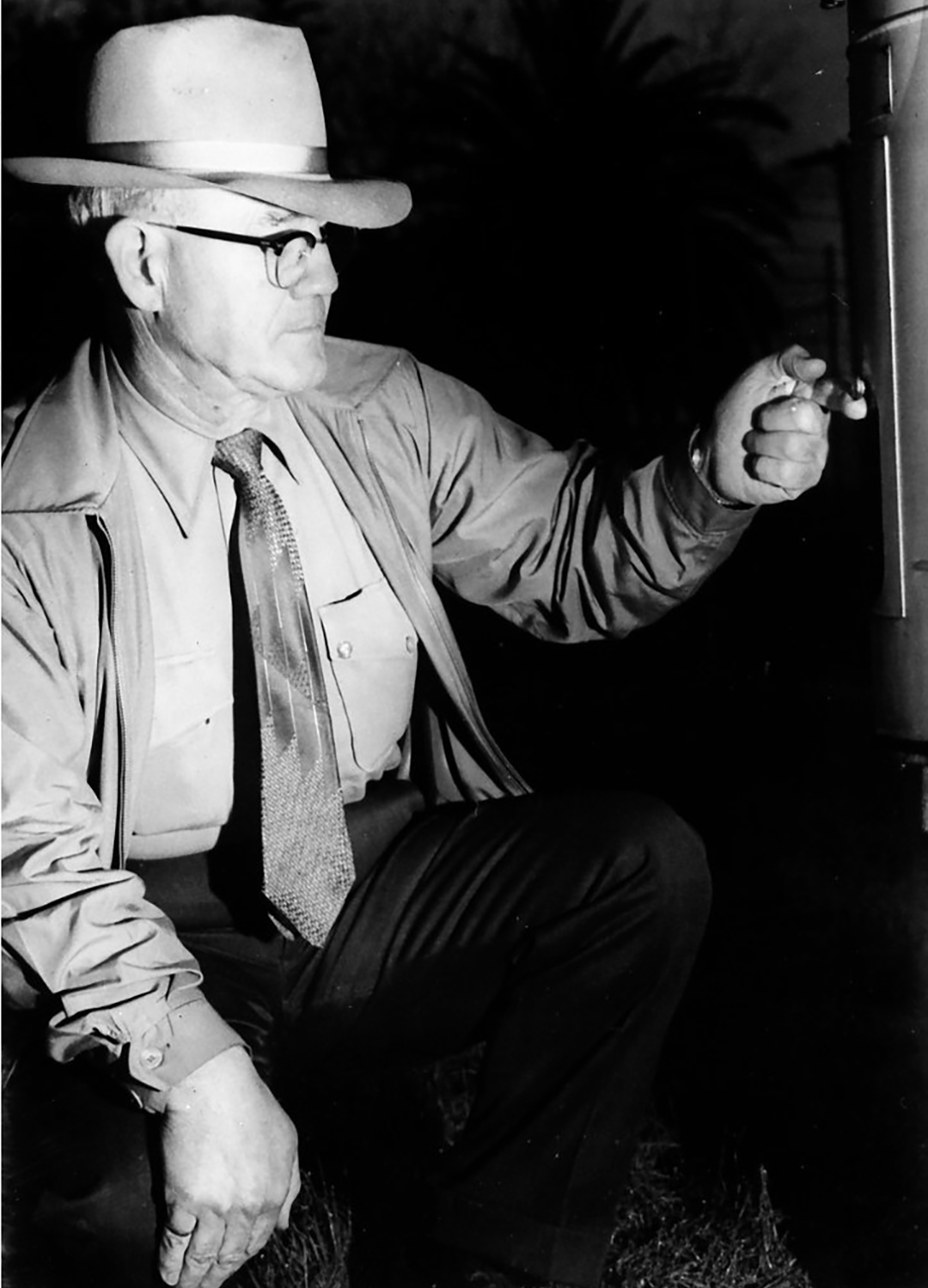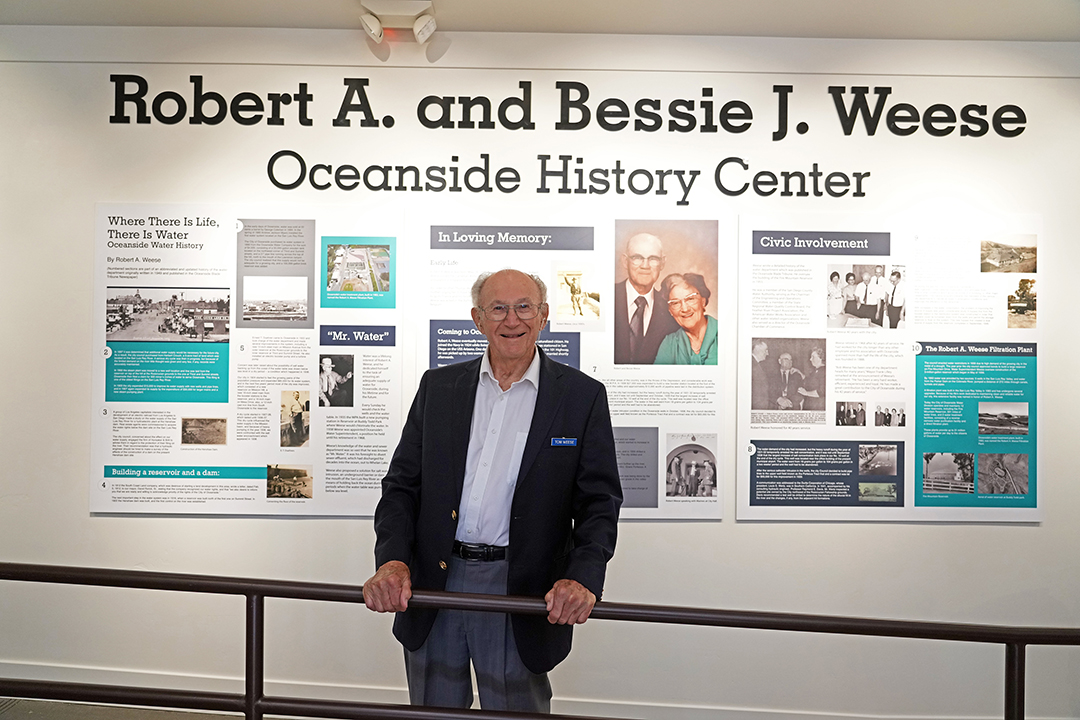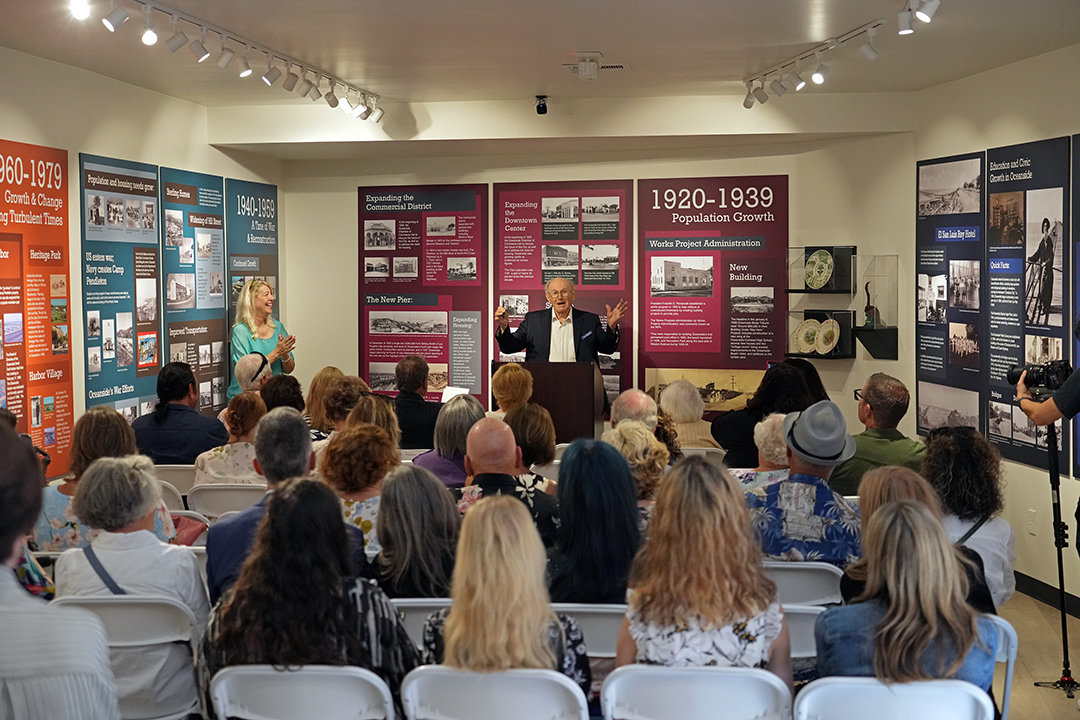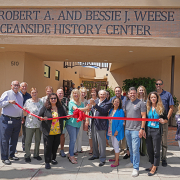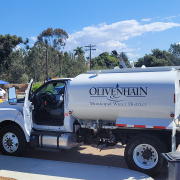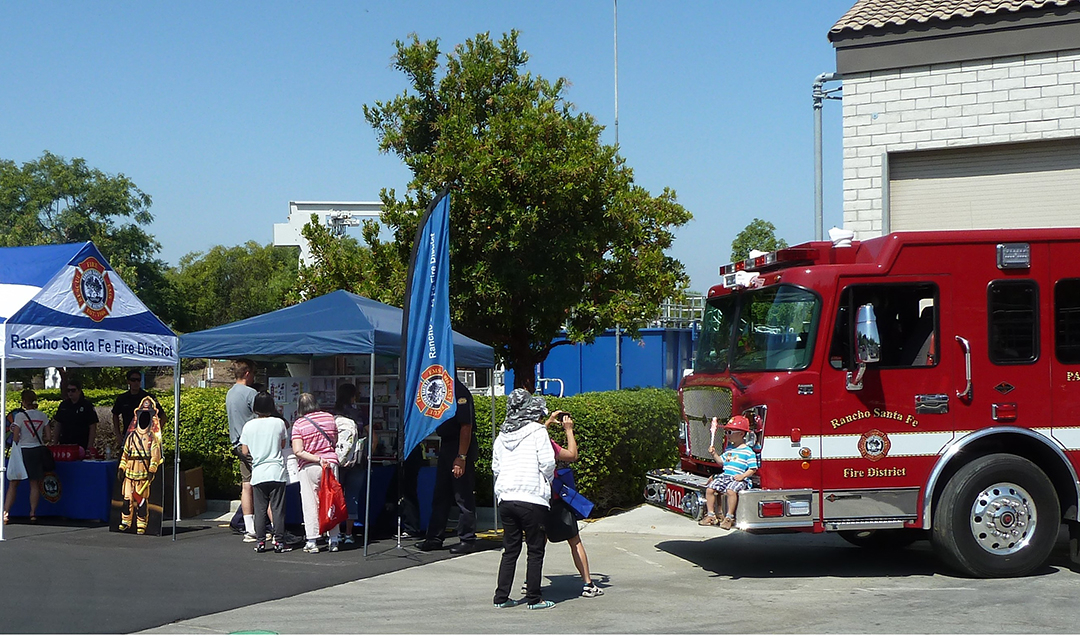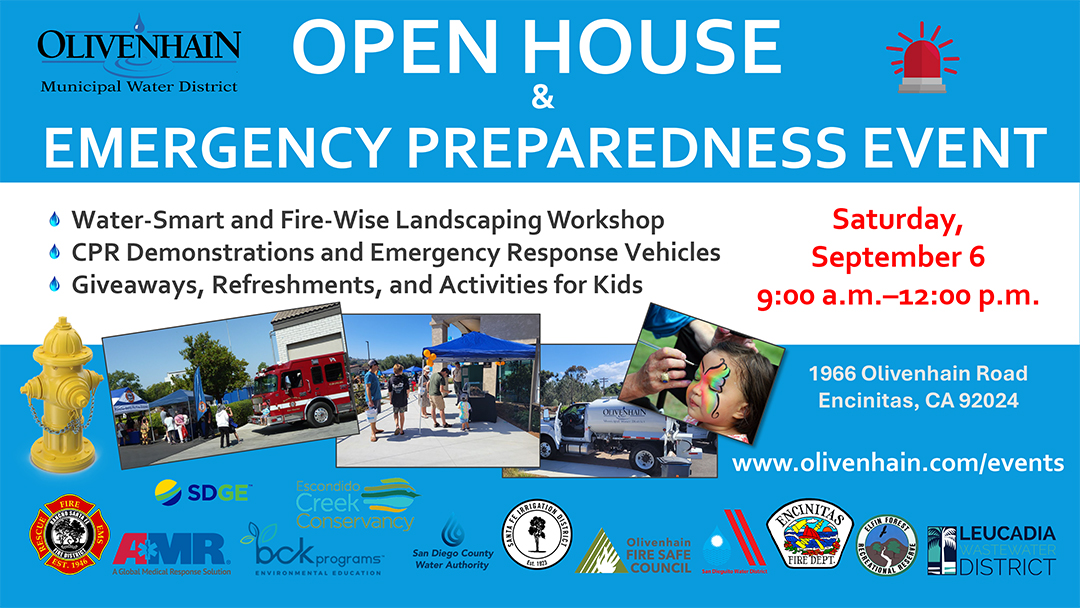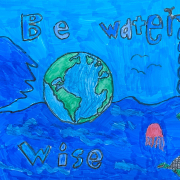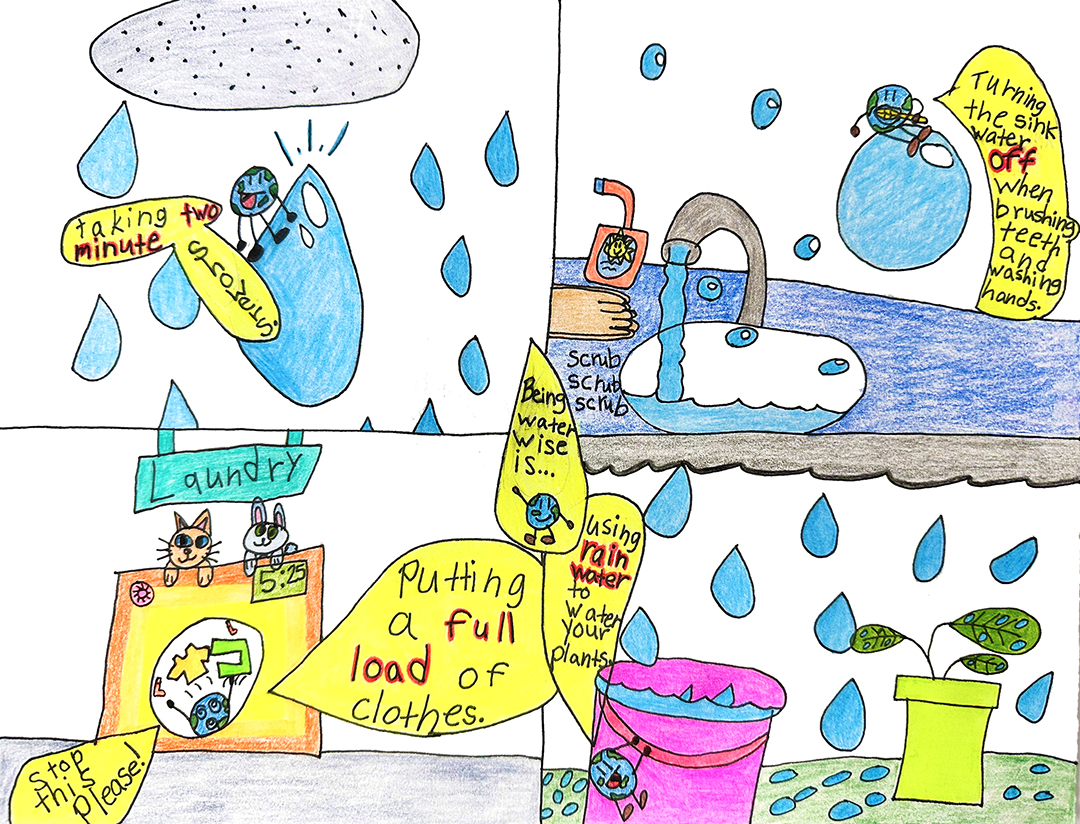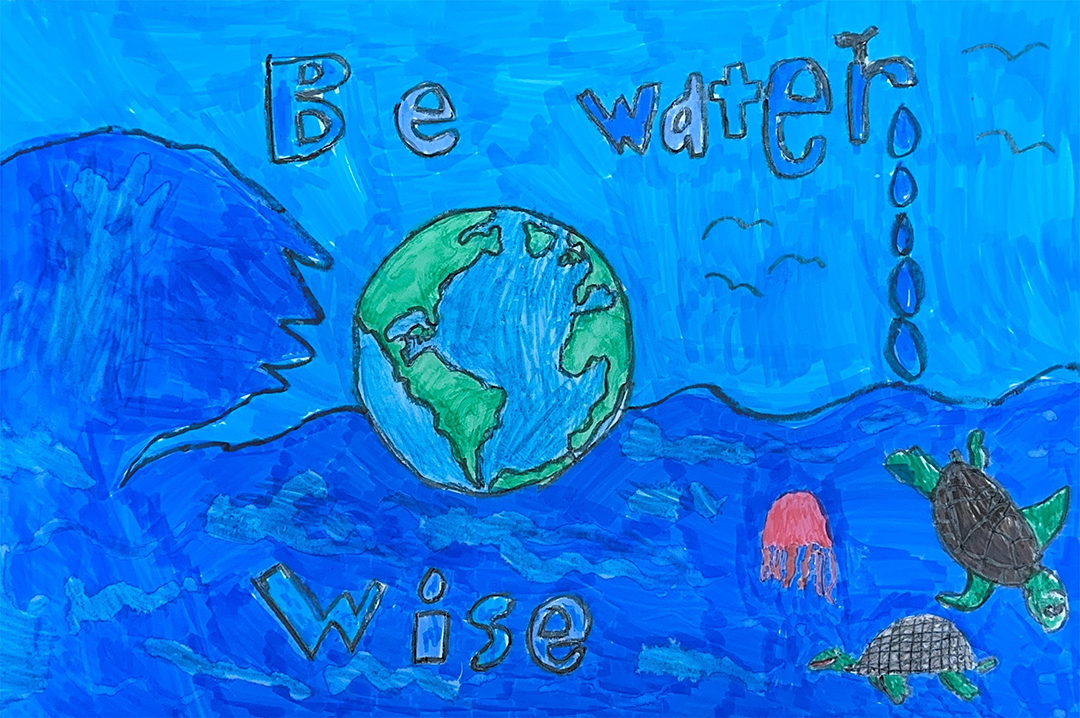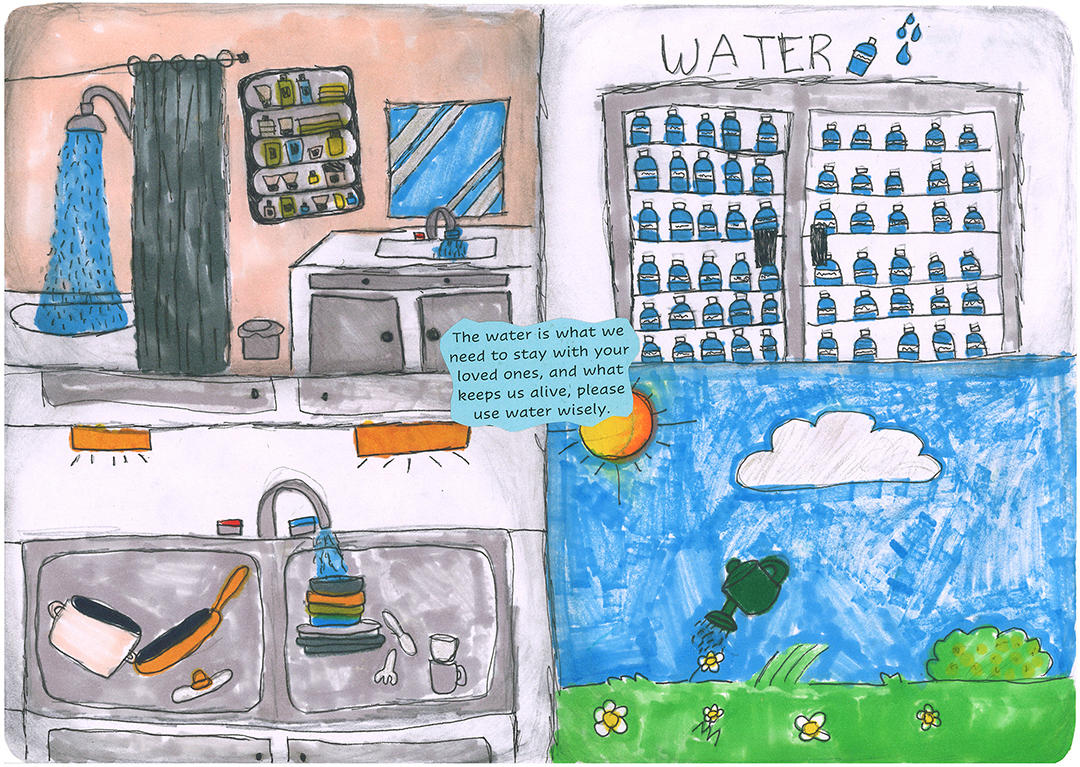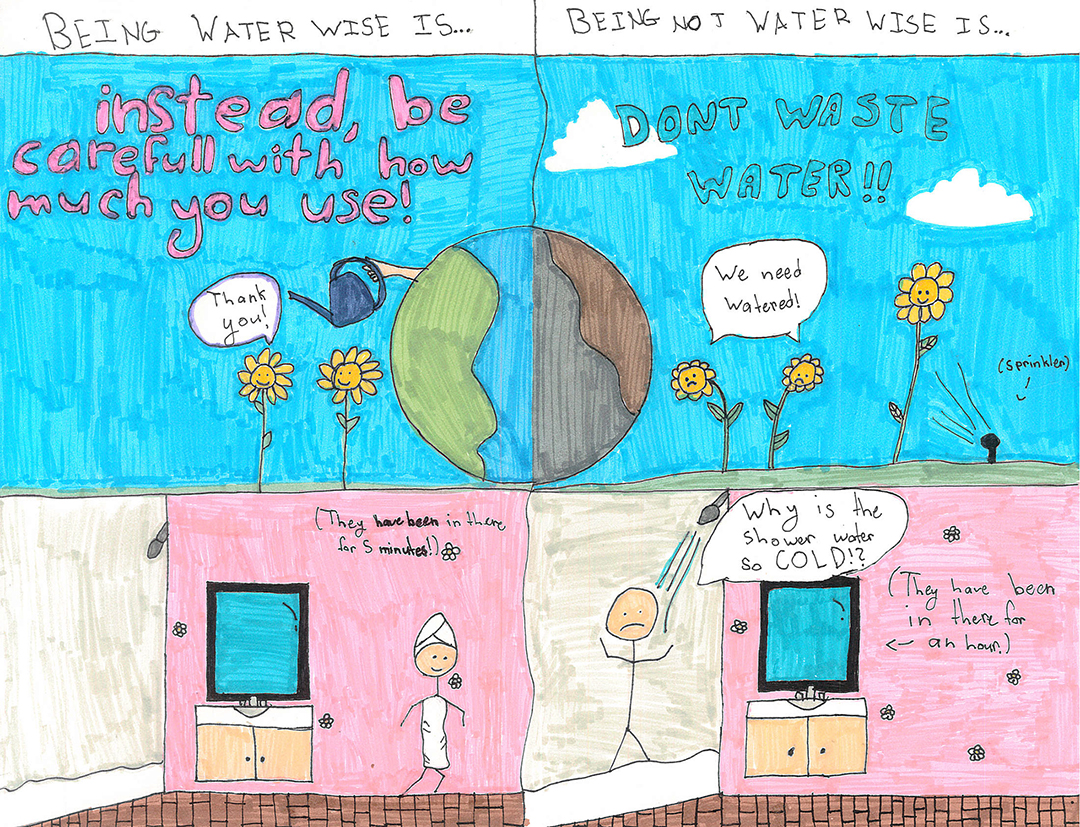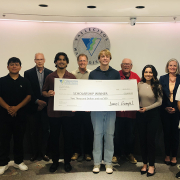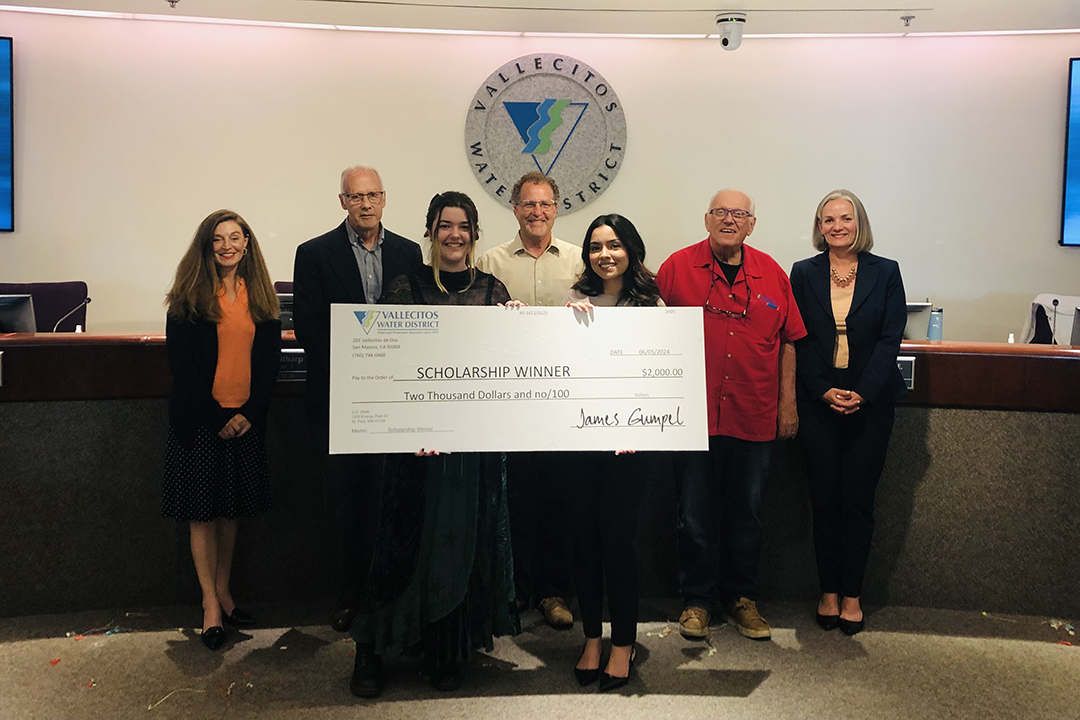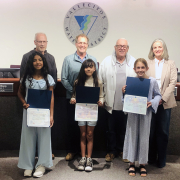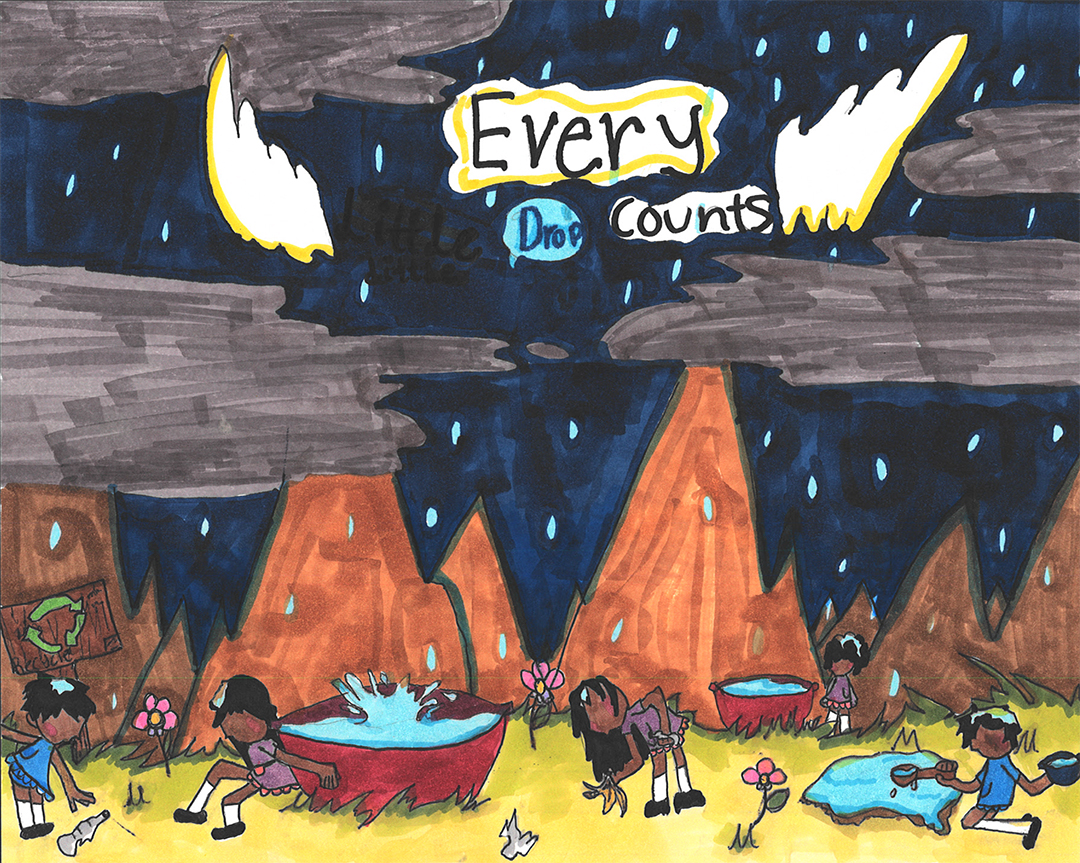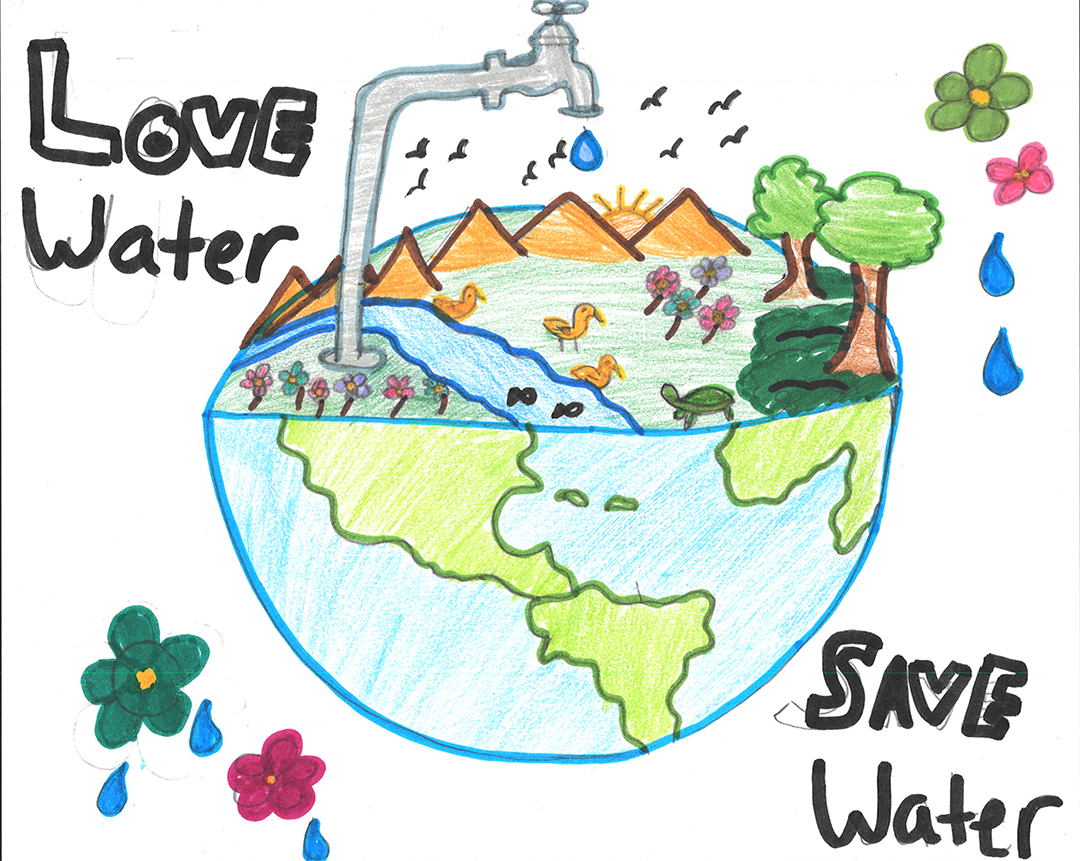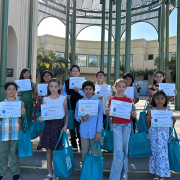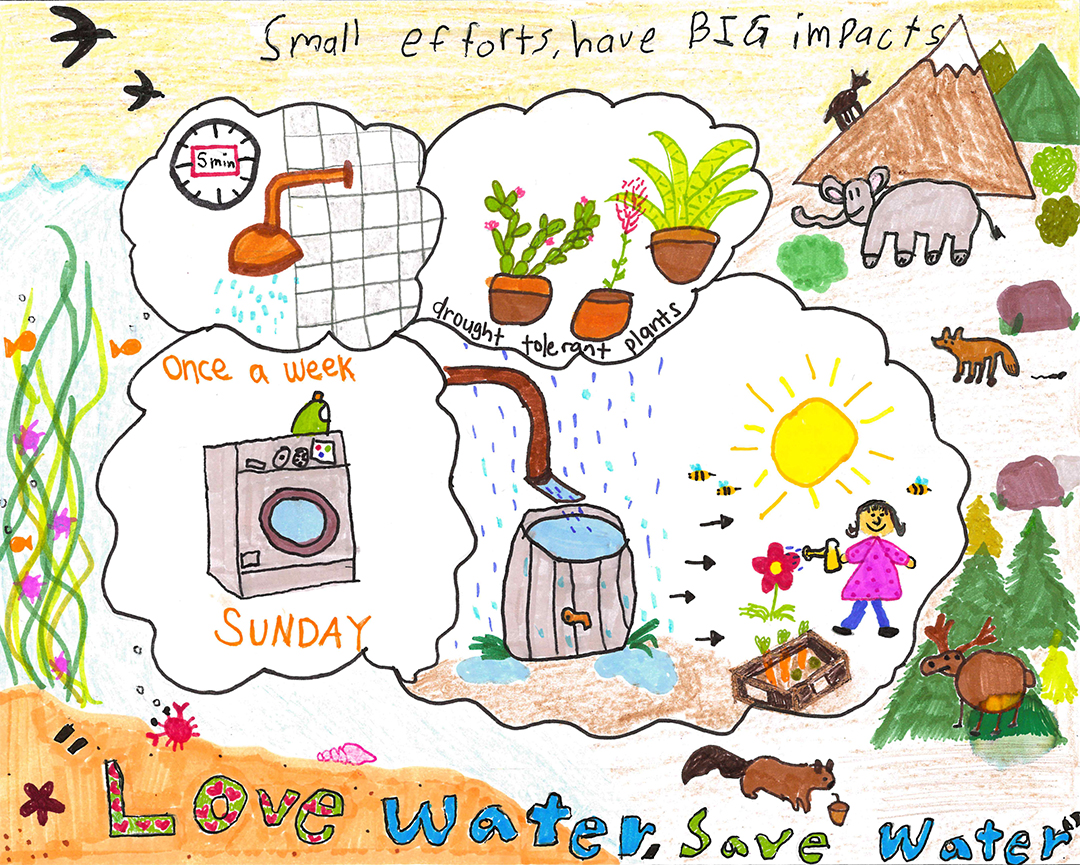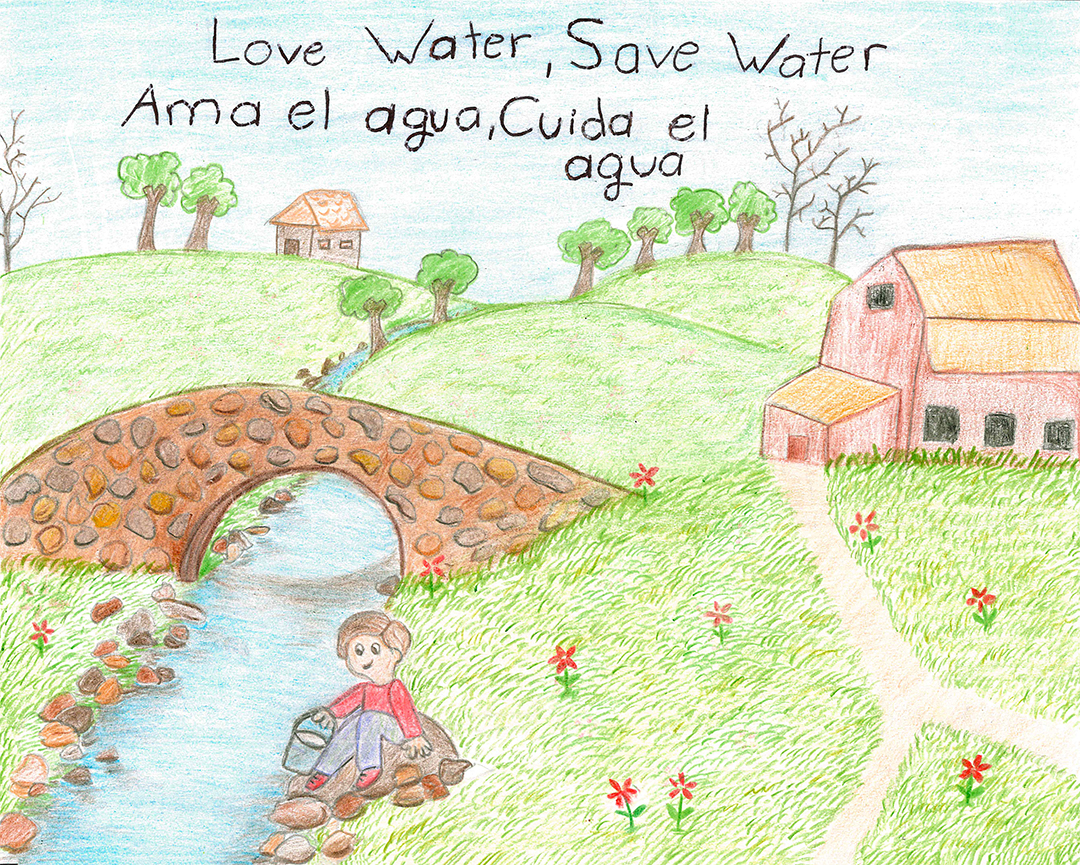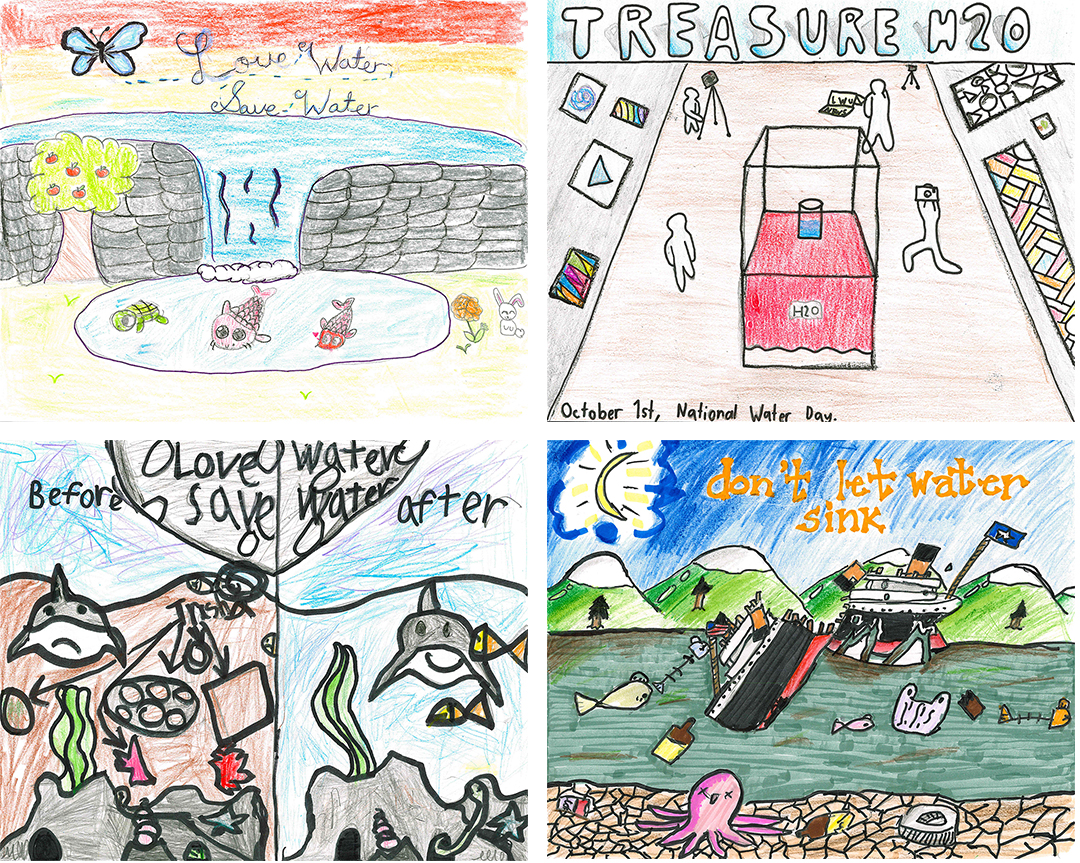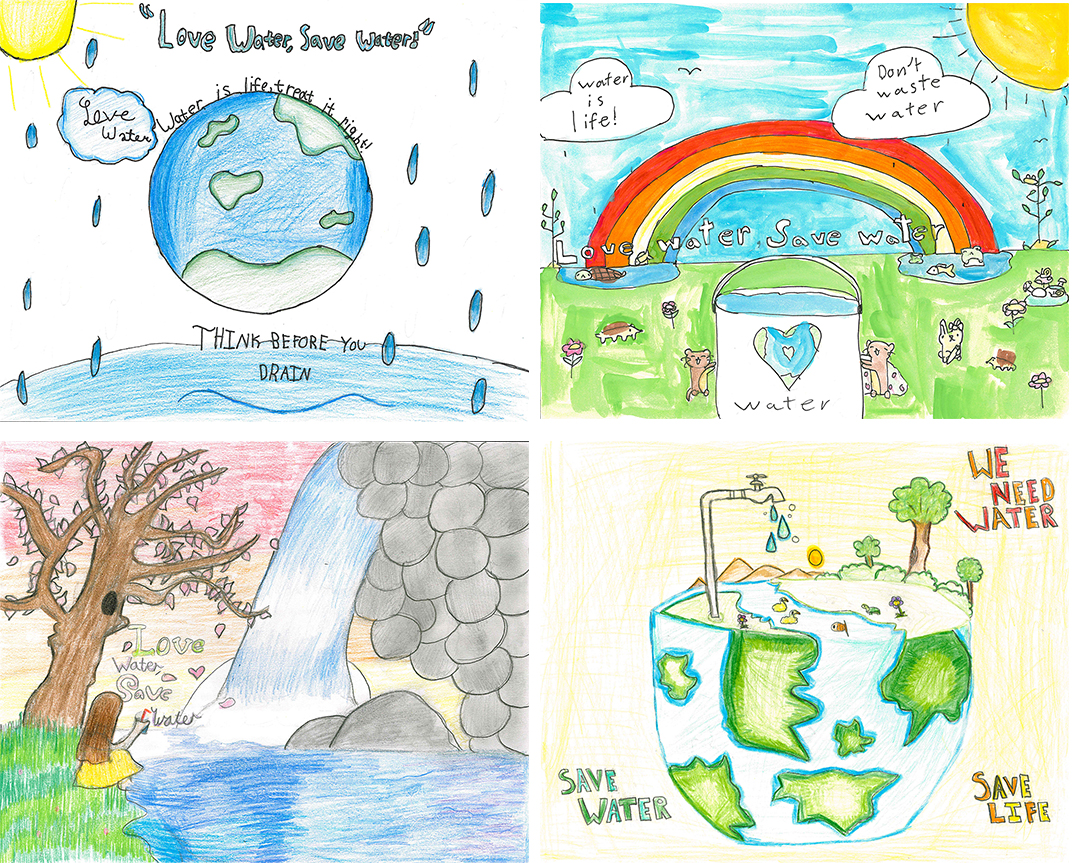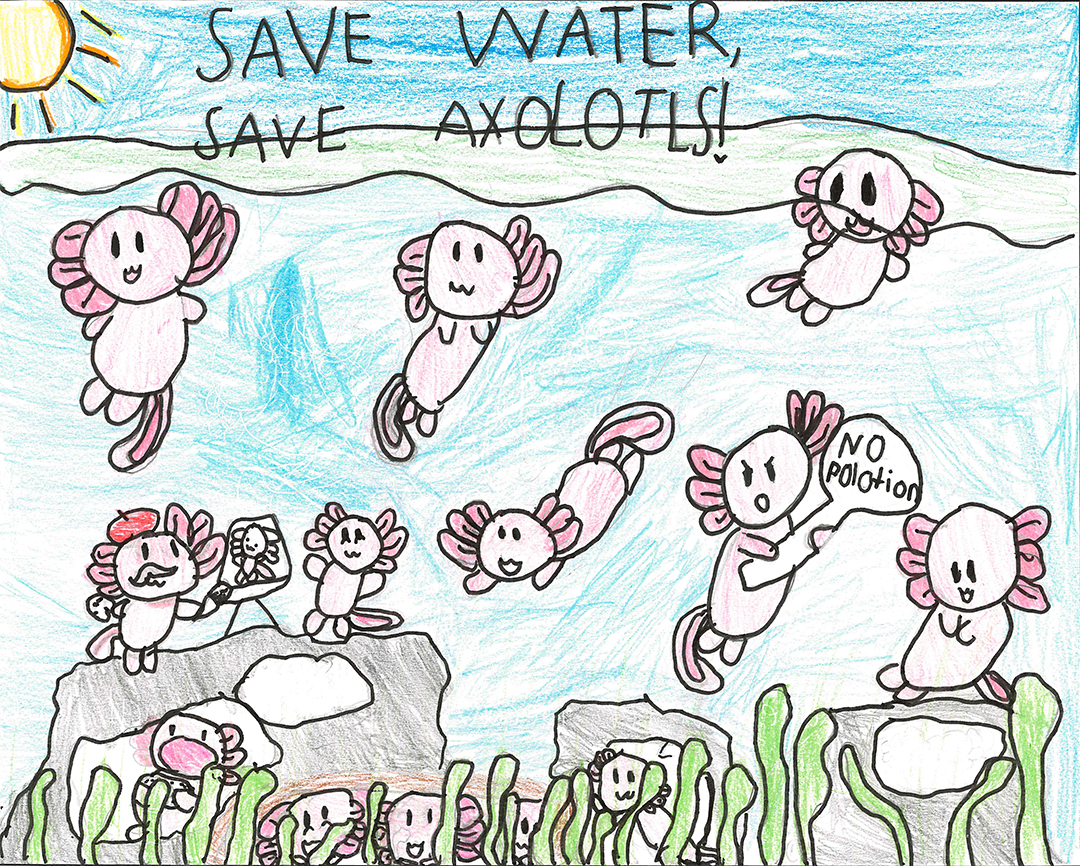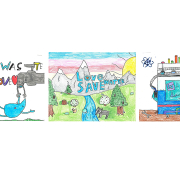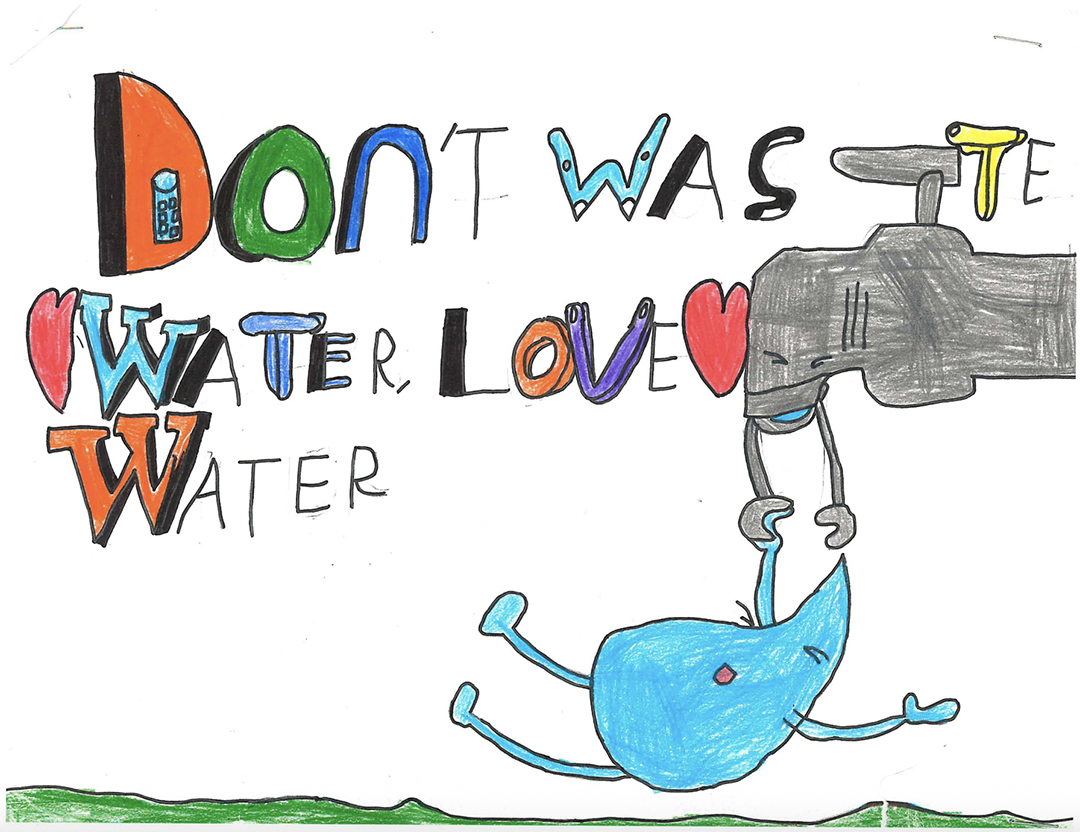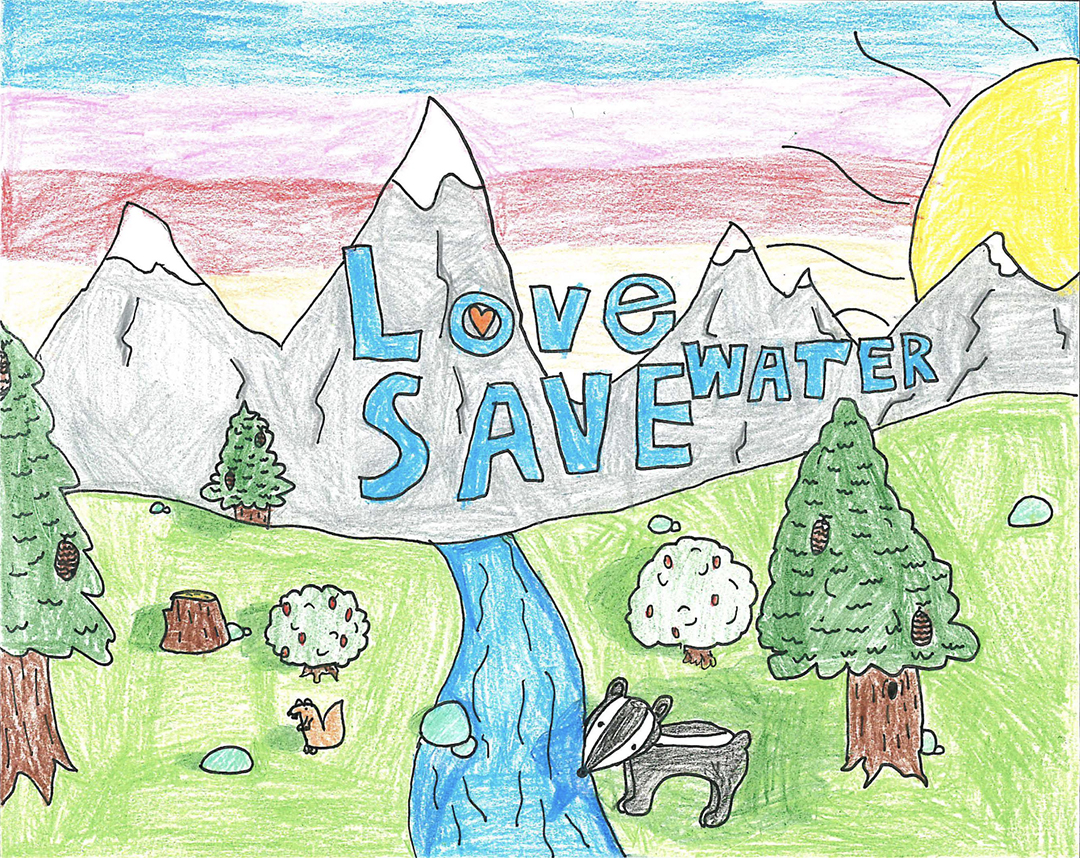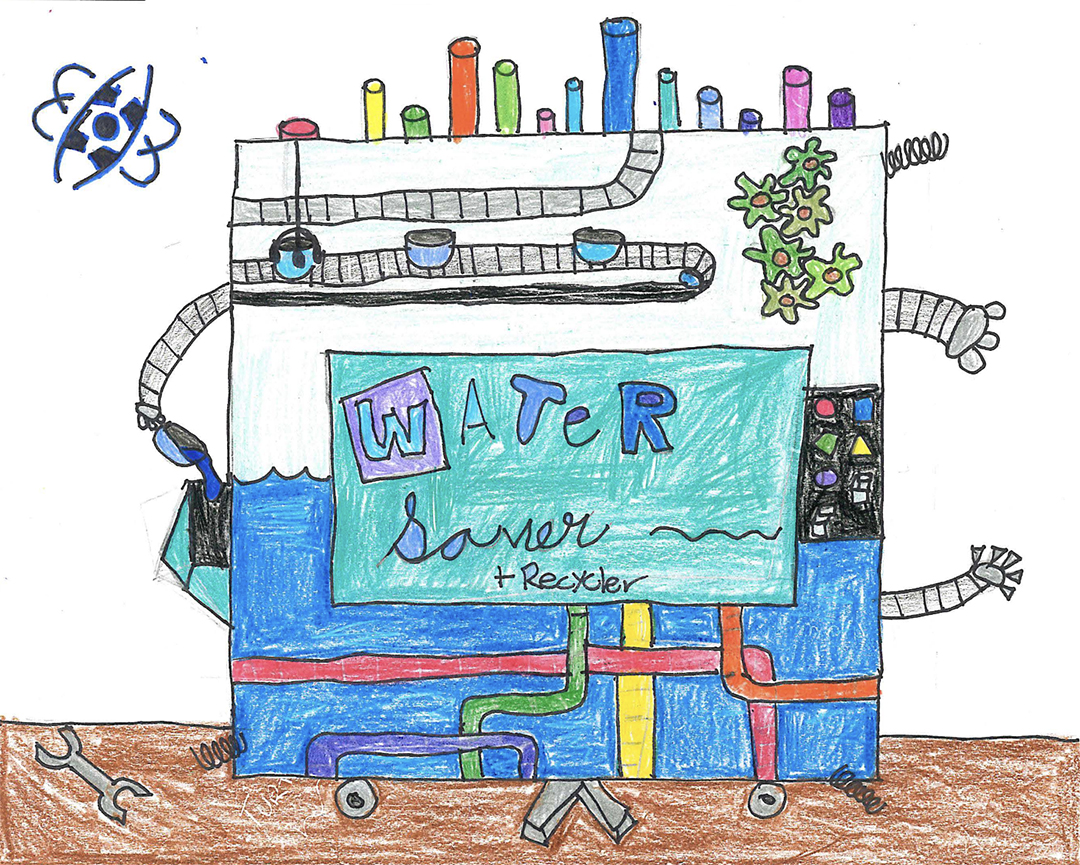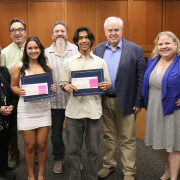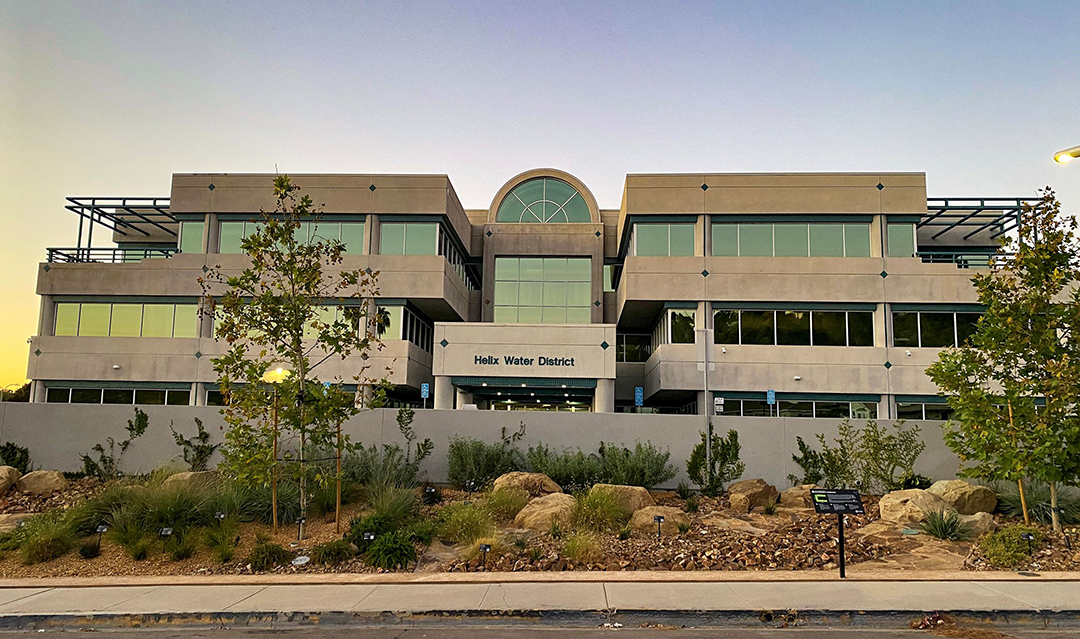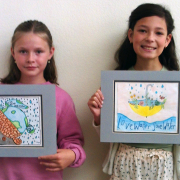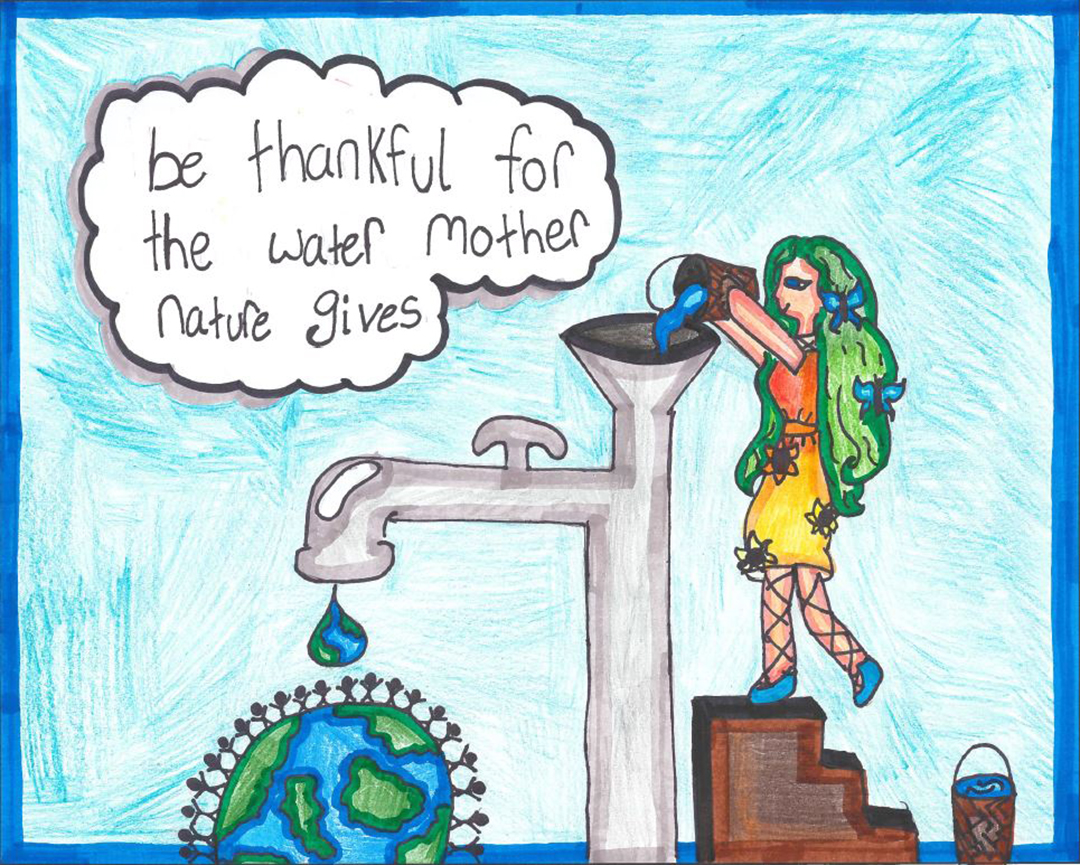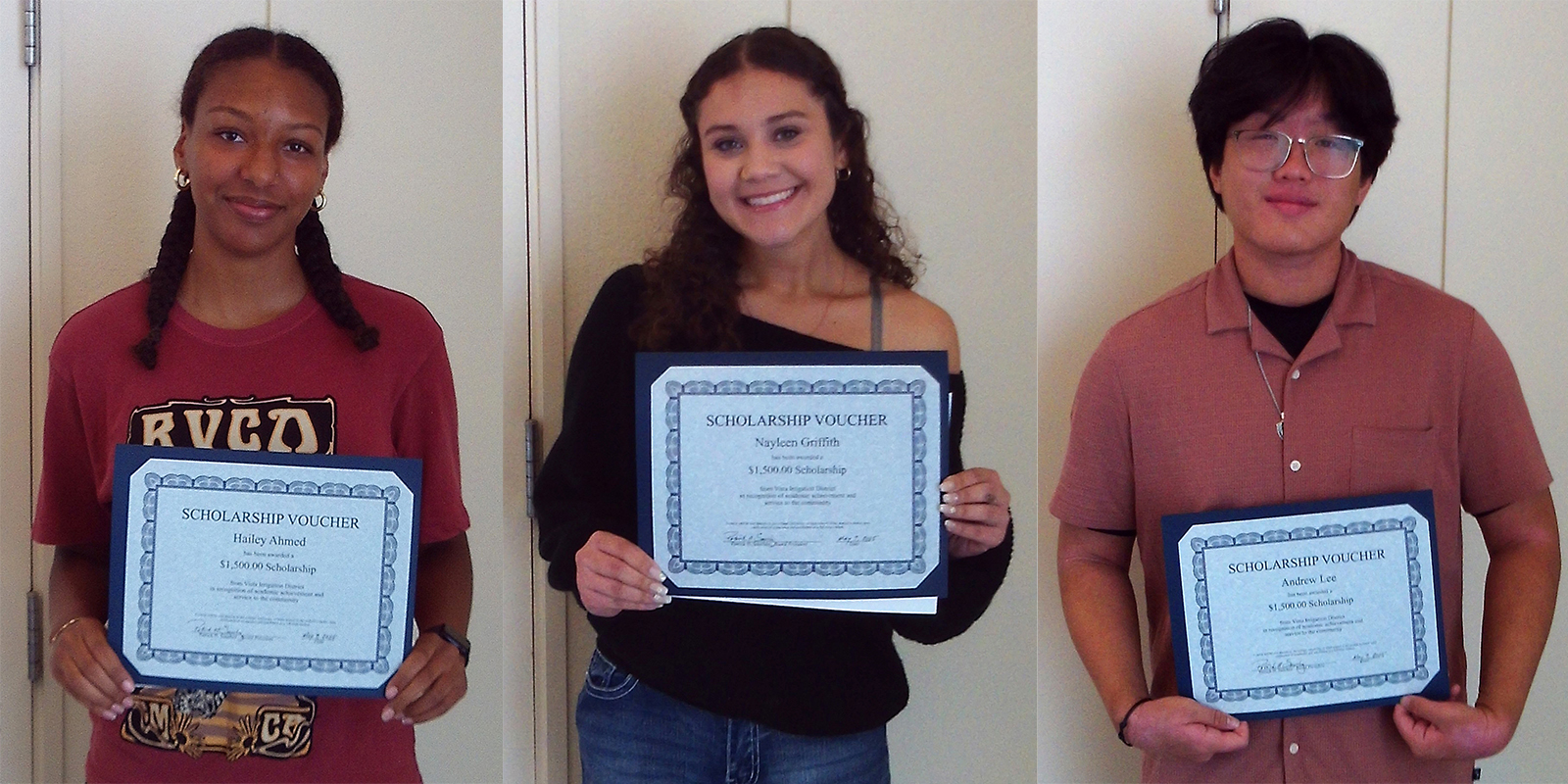Award-winning exhibits at the San Diego County Fair Paul Ecke Jr. Garden Show offer attendees inspiration for their own low-water use landscaping projects from examples of creative low-water use and native plant gardens at the Fair’s popular exhibit.
Groovy Garden Returns To County Fair’s Garden Show

The Groovy Garden is designed to draw attention from fairgoers who are new to gardening and creating waterwise landscaping. Photo: San Diego County Water Authority
Debby Dunn, Senior Water Resources Specialist with the San Diego County Water Authority, returned for her third consecutive year to the Fair as both an exhibitor and a speaker. She says the exhibits, including her own “Groovy Garden” display, show how Californians are updating their lawns with beautiful and interesting water-wise landscape designs.
Dunn said what she enjoys most about creating her exhibit is the opportunity to help fairgoers learn about sustainable gardening who aren’t initially gardening enthusiasts. “I want to get the education to the people that don’t know what they don’t know,” said Dunn.
Dunn’s display won awards for Most Educational and Best WaterSmart Landscape. Her dog-bone shaped exhibit placed third for Garden Show Theme and runner up for the Master Gardener Association’s Earth-Friendly Gardening Award.
Embracing Pet-Friendly Design Elements
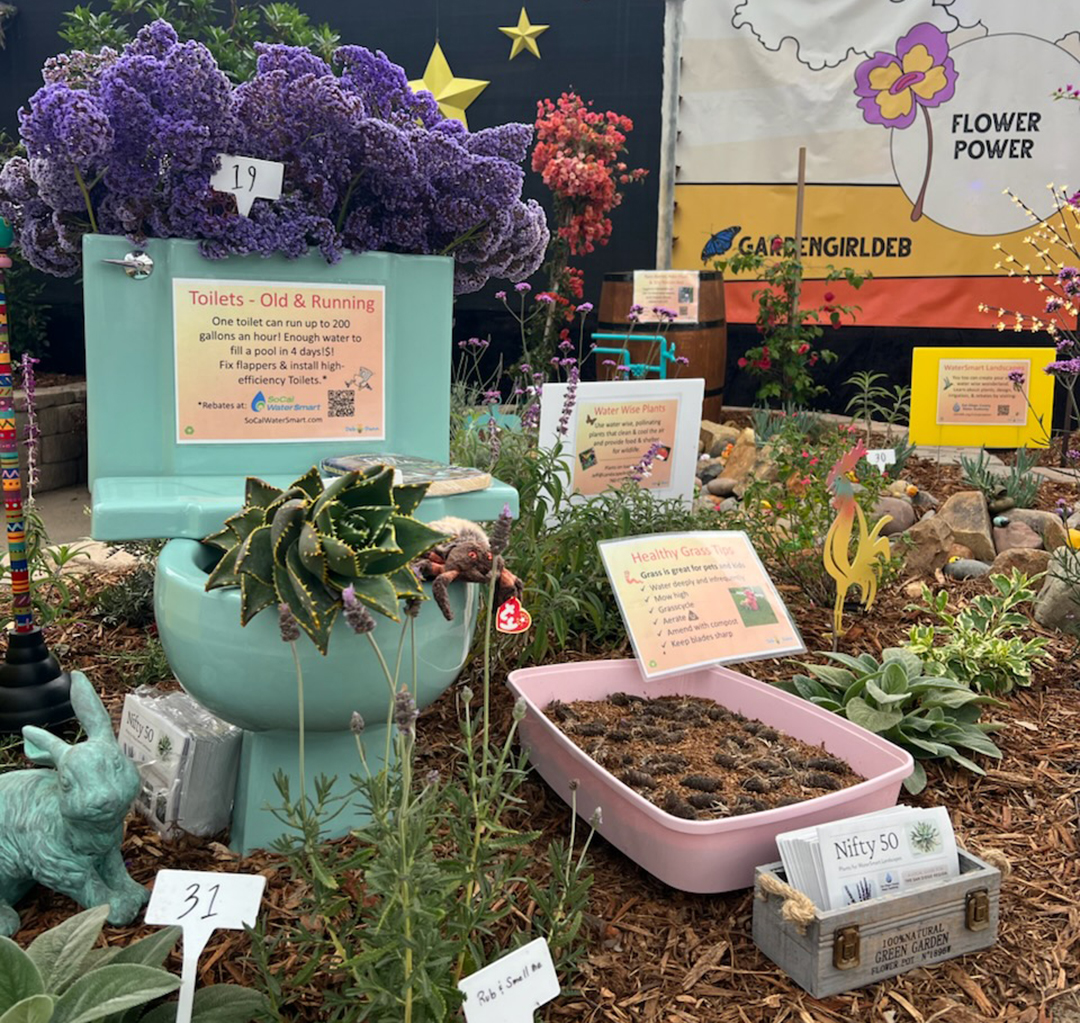
Humorous elements have a serious message about watersmart landscaping techniques. Photo: San Diego County Water Authority
Dunn designs her whimsical exhibit each year, inspired by the annual Fair theme. She designs it and her husband, Tim Schultz, helps with the installation. The 2025 theme is “Summer Pet-tacular.” Dunn added a pink kitty litter sandbox, a doghouse with a green roof, and plants with animal-inspired names such as Kangaroo Paws, Lion’s Tail, and Lamb’s Ear.
“My sandbox is about educating people on keeping their grass when it serves a purpose – like for dogs and kids,” explains Dunn. “The grass aeration plugs and compost look like something else you might find in a litterbox, but they are actually great tips for creating healthy grass.”
Dunn uses eye-catching, humorous elements to draw her visitors in to learn about household conservation practices. She repurposes colorful thrift store and garage sale finds to educate through imagination and playfulness to make a lasting impression.
“I like to incorporate over-the-top, fun display items into my exhibit that will draw people in and get them thinking about water use and sustainable landscapes,” said Dunn. Her Groovy Garden exhibit is known for featuring a colorful toilet so she can remind people to check for running toilets. This year, it is a bright shade of turquoise blue.
Support for Animal Adoption

Embracing the “Summer Pet-Tacular” County Fair theme, Debby Dunn of the Water Authority partnered with the Rancho Coastal Humane Society to feature adoptable dogs. Photo: San Diego County Water Authority
To help promote the Fair theme, Dunn partnered with the Rancho Coastal Humane Society. Its adoption center is just six miles from the Fairgrounds, and their popular thrift store is just four miles north. She is promoting upcoming events and supporting the organization by shopping at the thrift store year-round, where Dunn purchased several items in this year’s Groovy Garden display.
Dunn’s display also featured photos of adoptable pets, accompanied by a QR code that allowed visitors to learn more. Last week, she was delighted to learn that most of those pets had found their forever homes, so darling new pets are now posted.
Dunn says she’s talked to hundreds of Fairgoers this year. “There’s always a handful of showy, blooming plants people want to know about,” said Dunn.

The exhibit features tips on planning your landscape design to accomodate plant growth, and features many native plant choices. Photo: San Diego County Water Authority
She says this year it is Purpurea or Arabian Lilac (Vitex trifolia) with its green and purple foliage, as well as Cleveland Sage (Salvia clevelandii), a California native plant with its delightful aroma and whorls of purple flowers.
Both plants can be found on the Water Authority’s Nifty 50 Plant list.
California Native Plant Society Sweeps Awards
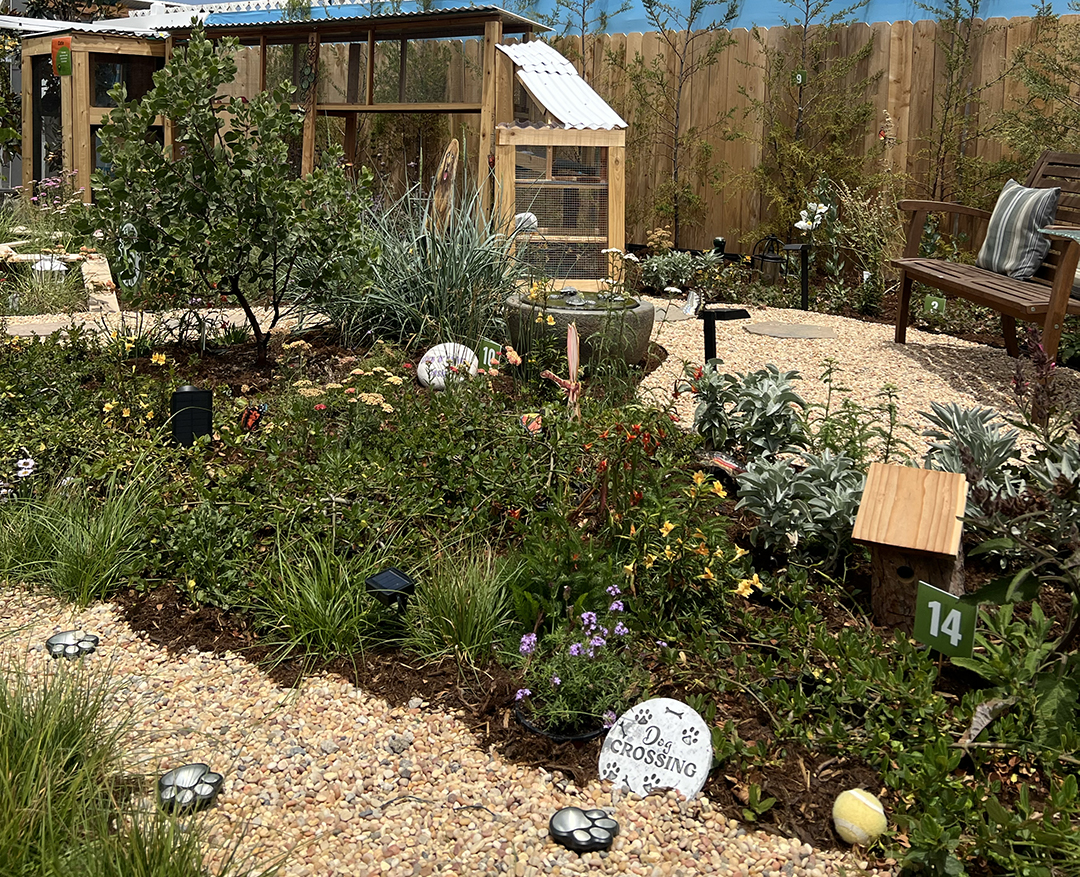
The California Native Plant Society’s County Fair exhibit won multiple awards in 2025. Photo: San Diego County Water Authority
The California Native Plant Society’s (CNPS’s) show garden “Paws, Wings & Wild Things” swept the awards with the depiction of its message that outdoor spaces can be safely shared by pets, people, and wildlife alike.
Inspired by the fair’s “Summer Pet-tacular” theme, the CNPS exhibit showed how native plant gardens can become vibrant, inclusive spaces through thoughtful design. Shaded patios, paw-friendly paths, and pollinating buffet of plants came together in one frisky, practical garden. It also showcased a Catio, which allows cats to safely be outside without harming birds or other wildlife.
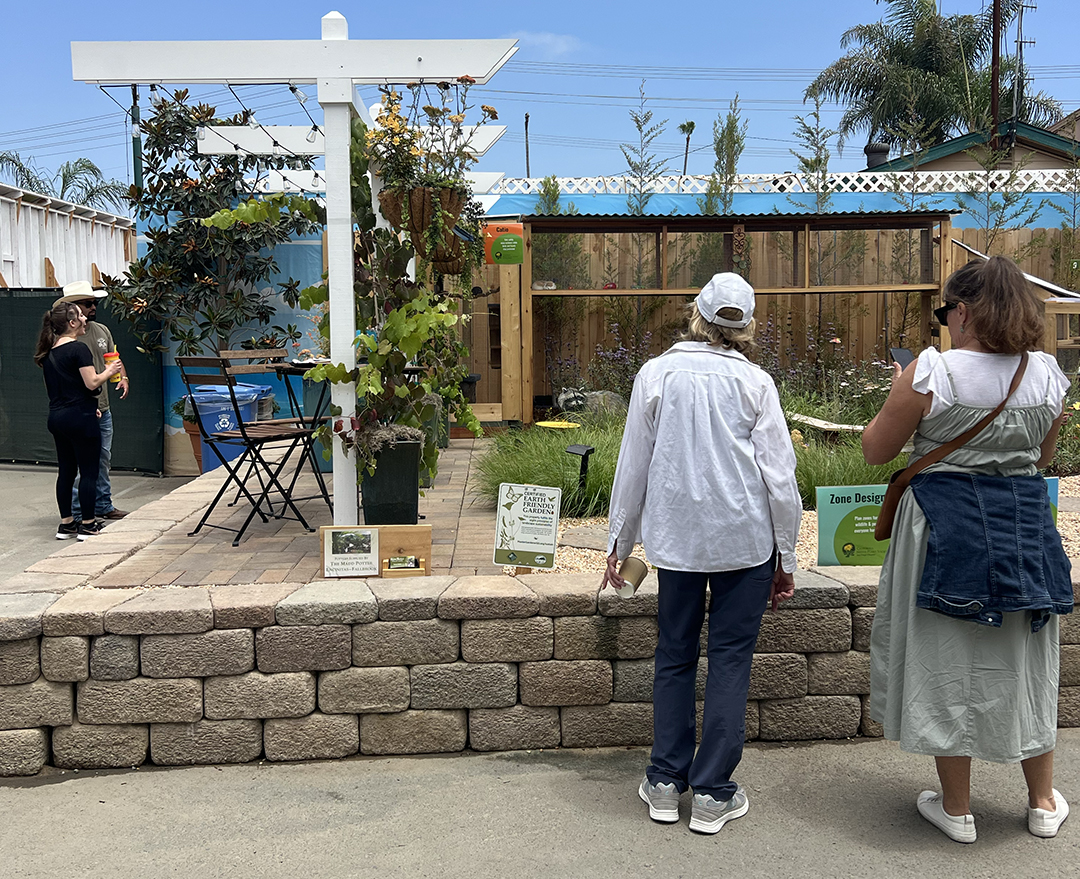
Visitors to the California Native Plant Society’s exhibit can learn how to incorporate native plants in their landscapes. Photo: San Diego County Water Authority
Paws, Wings & Wild Things helps expose fairgoers to the organization who might never have visited a CNPS booth or native plant garden before.
CNSP awards include:
- MiraCosta College Horticulture Program Award
- Anderson’s La Costa Nursery Best Water-Smart Garden Design
- Paul Ecke, Jr. Garden Show Theme Award – 1st Place
- Paul Ecke, Sr. Best Overall Exhibit Trophy
- Cuyamaca College Ornamental Horticulture Award
- Walter Andersen Most Practical Landscape Award
- Master Gardener Association Earth Friendly Gardening Award – Grand Prize
- San Diego Floral Association Best Landscape
Low-Water Use Gardens Suit Many Design Styles
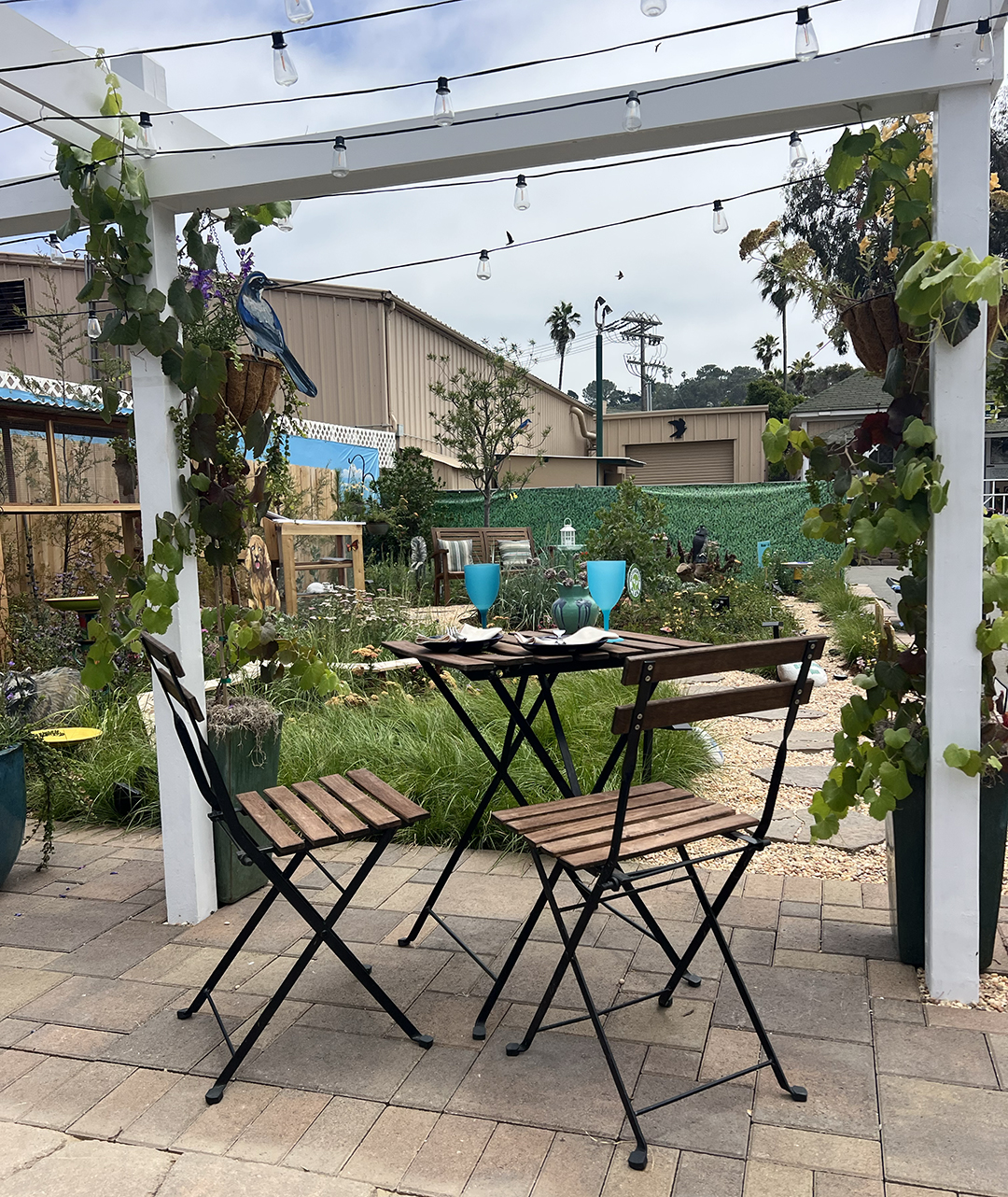
The San Diego County Fair Paul Ecke Jr. Garden Show runs through Sunday, July 6. Photo: San Diego County Water Authority
Dunn said low-water use landscapes offer many different styles to suit individual tastes and needs, similar to interior design styles.
“Everyone’s got their look and their style. It’s the same with plants. There are so many options and choices. Learn more by checking out the Water Authority’s Happy 100 plant list.
“If you’ve got kids and dogs, you may need grass; just water it wisely. But if the only person walking on the grass is the person mowing the grass, you likely don’t need the grass,” said Dunn.
“There are countless beautiful, California native and water smart plants you can place in your garden that will bring you entertainment and joy. Remember to check out the Nifty 50 and Happy 100 to learn more!”
The 2025 San Diego County Fair will end on Sunday, July 6. The fair is open daily from 11 a.m. to 11 p.m.
